|
Crime Month
Living as I do, far away from the hubble-bubble of the publishing world, I was blissfully unaware that we are now in ‘Crime Writing Month’ a promotion by the Crime Writers Association which seems to have completely excluded East Anglia. (See www.crimewritingmonth.co.uk)
However, I certainly intend to be at the second Crime in the Court event, which climaxes the promotion on July 3rd for the inaugural one last year, centred on the excellent Goldsboro Books, was a splendid occasion and one of the best street parties I have been to not celebrating a war.

Full details of the evening, to be held in Cecil Court in the heart of London’s West End can be found on www.crimeinthecourt.com and I have learned that my old chum Len (‘L.C.’) Tyler will be there as he is already billed to appear, quite modestly I thought, as “the best crime writer published today” – or at least one of them.
For legal as well as geographical reasons, I am uninvolved in ‘Crime Writing Month’ with one notable exception: a modest contribution to an absolutely splendid initiative which I can best describe as a “rolling blog” tribute to the life and work of the late, great, Reginald Hill. The idea, as I understand it with my feeble grasp of things on the jolly old interweb, is that something new about Reg is scheduled to appear every single day during June on a special site www.crimewritingmonth2012.wordpress.com established by those two crime-fiction loving web-mavens (if that’s a word) Rhian ‘Crimeficreader’ Davies in Wales and Margot ‘Confessions of a Mystery Novelist’ Kinberg in America.
This seems to be a splendid initiative although it is a pity the tribute to Reg Hill has to be posthumous and deserves to succeed (despite my contribution) because of the amount of forward planning which has been undertaken by Mistresses Davies and Kinberg, which to me – a novice in such things – seems to have been more thorough than the pre-planning of any land war in the Middle East in recent years.
The Girl in Clerkenwell
Despite the arduous journey to the borderlands between Clerkenwell and Finsbury, it was a pleasure to finally meet Elizabeth Wilson, the author of the quite splendid The Girl in Berlin, which I raved about last month.
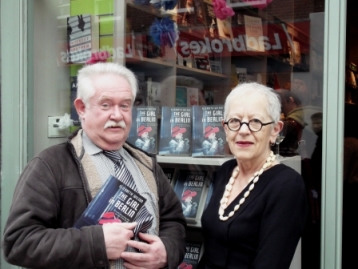
I am glad I met her before I heard the news that, just as with her last novel War Damage, The Girl in Berlin has been disgracefully overlooked in this year’s Ellis Peters Awards for historical crime writing, otherwise a pleasant social occasion would have been sullied with the need for grovelling apologies on my part.
It is clearly my fault that War Damage, set in the late 1940s and one of my picks of 2009, and The Girl in Berlin, set in the spy-mania of the 1950s, have both been ignored – not even making the Ellis Peters’ shortlist – just as John Lawton’s A Lily of the Field was last year, and that ‘the curse of the Ripsters’ has struck yet again.
I am seriously thinking of reviving my offer to publishers who think they have a book worthy of one of the crime-writing awards. For a small consideration, I am willing to refrain from saying publicly that I think the book is any good. Thus, given suitable compensation, the curse of the Ripsters might be laid to rest.
I fear, however, I may be too late to save the splendid Trackers by South African Deon Meyer, which I picked as my thriller of the year for 2011 and I now see is shortlisted for the Crime Writers’ International Dagger. I must immediately look up the Afrikaans for ‘I’m very, very sorry’.
Top Notch and More
I may have mentioned previously that among the many hats I wear professionally is that of Series Editor of Top Notch Thrillers, an imprint of Ostara Publishing dedicated to reviving Great British thrillers which do not deserve to be forgotten. Now that far-seeing publishing empire has seen fit to commission me to take on an additional piece of headgear, as the editor of a new series, Ostara Crime, which is dedicated to bringing more recent, quality crime-writing to a new readership.
To do this, at least in its first year of operation, Ostara Crime aims to reissue three titles as print-on-demand trade paperbacks and as eBooks, from each of its authors, beginning (as of now) with the first three ‘Kate Kinsella Medical Mysteries’ by Christine Green.
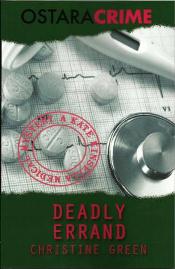 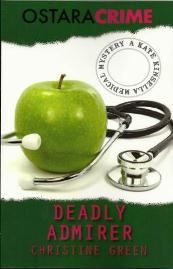 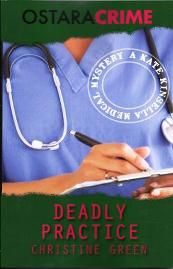
Deadly Errand, Deadly Admirer and Deadly Practice, first published between 1991 and 1994, introduced Kate Kinsella – a dedicated community nurse who really wants to be a private eye – and her sidekick Hubert Humberstone, a local undertaker and rabid shoe fetishist! This unlikely duo (both professionally used to dealing with death) were to become Christine Green’s best-known fictional sleuths in a long-running series which updated the traditional English ‘village cosy’ mystery to small-town, Middle England.
Following in the summer will be the first three ‘Georgina Powers Investigations’ by the award-winning Denise Danks: The Pizza House Crash, Better Off Dead and Frame Grabber which were originally published 1989-92.
Technology journalist Denise Danks was probably the first crime-writer to introduce readers to the world of computers and to predict the role technology would play in financial transactions, the music business and virtual game play. In Georgina Powers, a heroine said to have been inspired by one of Enid Blyton’s ‘Famous Five’, she created an independent (often drunk), feisty (often violent), computer-literate heroine long before anyone heard the name ‘Lisabeth Salander’.
In 2013, two other authors will join Ostara Crime, each with three books featuring their series’ characters: Lesley Grant-Adamson and Janet Neel.
Full details of Ostara Crime and Top Notch Thriller titles can be found on www.ostarapublishing.co.uk and the website can be used to contact the publisher with suggestions of which titles readers would like to see returned to print.
Last month, Ostara offered copies of their latest Top Notch Thrillers in a competition celebrating the work of Duncan Kyle and received a record number of entries. The winner, chosen at random to receive copies of A Cage of Ice and Terror’s Cradle was Ruth Horrocks of Bedfordshire.
This month Ostara are offering copies of all three Christine Green titles which launch the Ostara Crime imprint. To enter simply answer the question in the Competitions section on the Shots Home Page. A little basic research on the Ostara website may prove useful.
Spies Still Pending
Despite none-too-subtle hints last month, I am still unable to confirm that three vintage thrillers from that ‘Queen of the Spy Story’ Helen MacInnes are to be reissued by Titan Books this month.
 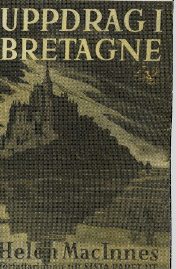
I only hope I was right, for otherwise I know it will be a source of great disappointment to my Swedish consultant, the venerable Iwan Morelius who was not only like me a fan, especially of Assignment in Brittany when translated into Swedish, but actually met Helen MacInnes in her Park Avenue apartment in New York in 1980. [I am indebted to Iwan, yet again, for permission to raid his photograph album.]
Girl Power
Although it does not attract the attention of the quality press, and is unlikely to be high on the conversational agenda at dinner parties thrown by the chattering classes, ITV’s cop show Scott & Bailey is remarkably good and on its latest outing got more than five times the viewers than did that media darling The Bridge.
It will no doubt be dismissed by many (though not by me) as ‘the British Cagney and Lacey’ but it has lots going for it. Yes, it’s about two female cops, who work on a Major Incident Team in Manchester with a female boss and indeed a neighbouring MIT also has a charismatic female boss. This means there are four very meaty roles for female actors – Suranne Jones, Lesley Sharp, Amelia Bullmore and (the under-used) Pippa Haywood – and all of them are quite brilliant.
Originally conceived and developed by a team of women (including Suranne Jones), the two series shown so far have also provide opportunities for female script writers (still in a minority on TV), among them Amelia Bullmore, and an even more rare opportunity for female directors. The Manchester locations are suitably dark and gritty – almost as grim as downtown Copenhagen in The Bridge – and the police procedure seems accurately done – even if slightly too much faith is put in CCTV footage. The personal and professional tensions within the Major Incident Team are obviously exaggerated for dramatic purposes, but on the whole do not strain credulity.
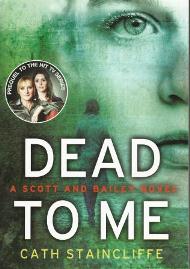
And when it came to the writing the first novel based on the series, who better to do the job than Manchester-based crime writer Cath Staincliffe? I am sure there will be many more series of Scott & Bailey, and many more books.
Shameless
I would be the last person to accuse my old chum and fellow boulevardier Justin Scott of being shameless, impudent, audacious, immodest or even insensible to disgraceful promotion.
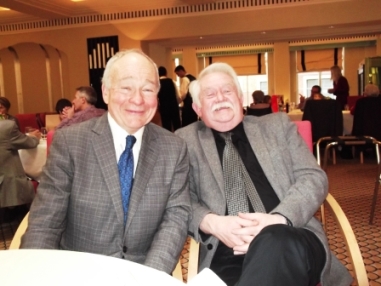
And simply because he treated me to a lavish lunch at his club when on an all-too-brief visit to London recently, I feel under no obligation at all to mention that he has yet another book out this year.
However, I would not be the man “who gives, singlehanded, reviewers a goodname” (© Justin Scott, 12th October 1995) if I were not to mention the fact that one of Justin’s most famous thrillers, The Shipkiller, has been reissued in hardback by Pegasus Books with a striking new cover design.
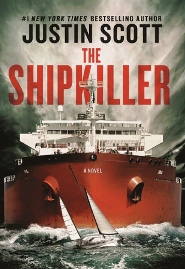
First published, I think, in 1978 and reprinted many times since, The Shipkiller established Justin’s reputation for stirring sea-going adventure stories, this one having been compared to Moby Dick, with a giant unstoppable tanker playing the part of the great white whale. I remember reading it as a naïve youth, whilst living in a small fishing port on the east coast and being so naïve that I loaned my copy to a member of the local yacht club. Naturally I never saw it again, but Justin informs me that the new edition comes with an inbuilt flotation device and a satellite tracking system.
Our Man in Moscow
I hear on the Shots grapevine (so there’s a good chance it’s half true) that the new novel from that American maestro of the spy story Robert Littell is to be Young Philby and is expected from UK publisher Duckworth in November.
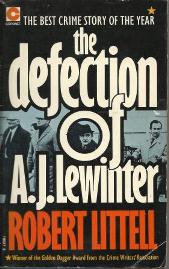
Robert Littell famously won the CWA’s Gold Dagger for The Defection of A.J. Lewinter back in 1973 but some, myself included, regard his 900-page 2002 epic fictional history of the CIA, The Company, as his masterpiece.
Now he has taken as his central subject that most notorious of British traitors, Harold ‘Kim’ Philby (1912-88), although it is far from the first time that Philby has appeared as a character in spy fiction. Possibly the first to utilise him was Alan Williams in Gentleman Traitor in 1974 and others, including Frederick Forsyth, Ted Allbeury, William F. Buckley and Duncan Kyle have all included him in their cast lists.
Naturally, I could not resist either, and gave him a walk-on, but vital, part in my short story Gold Sword published in John Creasey’s Crime Collection 1990 and set around D-Day in 1944. It is a source of constant pride here at Ripster Hall that a radio adaptation of Gold Sword was chosen for the BBC’s Afternoon Story on the 50th anniversary of D-Day on 6th June 1994.
Talent Spotting
I am constantly amazed at the way so many people mistake me for thriller-writing superstar Lee Child. For a start, he is taller than me and, in a certain light, is said to be more ruggedly handsome. I would say there are more significant differences. I do not share Lee’s fondness for the colours blue or claret and whereas every eight seconds someone somewhere in the world buys a Lee Child book, I know all my readers personally.

There is one area, however, where we are almost identical and that is in our admiration for the young Chicago-based crime writer Marcus Sakey, whom we both regard as one of the rising stars of the genre. In fact it may be more accurate to say that the Sakey star has already risen for The Two Deaths of Daniel Hayes, to be published by Bantam in July, is his fifth novel.
It was about three years ago that Lee and I first shared our enthusiasm for Sakey’s gritty urban thrillers and now proof copies of Two Deaths come with what I can only describe as a letter of introduction from Lee, who enthuses about the “depth and intelligence and passion and emotion that sets Sakey apart….This guy is the real deal and the complete package. He’s got it all. He writes like a dream, he creates characters exactly like people you know, he scares you and above all he keeps you turning the pages.”
I can find little to argue with Lee in this as I agree entirely and have already suggested that Marcus Sakey is the leading light in a resurgent Chicago school of crime writing. I must say, however, that if Lee Child continues in this generous vein he may well find his remarks quoted on the covers of other people’s books…

I have been fortunate to have had the chance to read The Two Deaths of Daniel Hayes already and I can say without reservation that Lee Child’s faith is not misplaced. Starting with a character who has traumatic amnesia who may or may not have killed his wife, the plot twists and turns like an anaconda in a Jacuzzi. Set mostly in Los Angeles, with lots of gentle sideswipes at the world of television scriptwriting and one of the iciest and most efficient bad guys in crime fiction since Elmore Leonard was in his pomp, this is a damn fine piece of work.
Mystery Masters
I am indebted to my dear friend, and fellow archaeologist, Catherine Aird for bringing to my attention a piece in the Canadian newspaper the Globe & Mail in which 12 well-known crime-writers, or ‘mystery masters’, were asked to name their favourite crime novels.
Two out of the twelve went for novels by Josephine Tey; Louise Penny and Tana French opting respectively for The Franchise Affair and The Daughter of Time. What intrigued me more, however, was the choice of American crime master Michael Connelly, who opted for New Hope for the Dead by the late, great Charles Willeford, a name slipping sadly into the shadows of crime fiction.
I have always known that Michael Connelly writes exceedingly good books. Now I know he reads good ones too.
Redemption Song
Will Ryan Drake be the next Jason Bourne, Jack Bauer or even – dare one dare to dare – Jack Reacher? Publishers Century hope so and so, probably, does author Will Jordan, a native of the proud literary nursery that is the Kingdom of Fife, which I believe is somewhere north of the 56th Parallel.
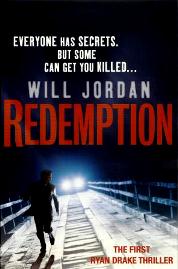
Ryan Drake, a Brit working for the CIA, is ex-SAS (naturally) and a ‘Shepherd’ – an operative who finds and brings home missing agents, and his debut comes in Redemption, a 550+ page blockbuster published in June with (naturally) a‘walking away man’ cover.
Every character is introduced by the colour of their eyes (mostly blue, often ‘steely’ sometimes ‘icy’) and the colour or texture of their hair; but never mind their coiffeur, these characters are resourceful and tough and know the difference between a HALO jump and a HAHO jump and one female agent, being tortured in a Siberian prison still has the presence of mind to notice her guards’ weapons: ‘Makarov PMs; semi-automatic, blow-back-action pistols. Eight-round magazines, firing 9mm full metal jacket projectiles. Effective range, up to 50 metres.’
Just to be sure the reader gets the point that these are tough guys ina hard world, there are few punches pulled with the language – and my more sensitive readers may wish to look away now.
There’s no doubt that the word ‘shit’ certainly exercised the spellcheck in the writing of Redemption. Between pages 12 and 15 alone, the hero thinks ‘Shit!’, says the word ‘Shit!’ out loud, admits that he ‘felt like shit’, knew that ‘there was shit brewing’ and has to deal with ‘reports and testimonies and all the other bullshit’.
Now that, in the hands of an unscrupulous reviewer, is surely providing a hostage to fortune, and it is also a brave editor who lets through the internal thought of hero Ryan Drake: He felt as if he’d just landed in some cheap spy novel.
|
|
TV Times
I hear that this Autumn our colonial cousins across the Atlantic are to be treated to a new interpretation of Conan Doyle’s immortal Sherlock Holmes stories in a series entitled Elementary, which will be set in present-day New York.
The role of Sherlock will be taken by Jonny Lee Miller (famed for his part in Trainspotting) and the role of Joan (not a mis-print) Watson will be played by the delightful Miss Lucy Liu, who was the sword-wielding scary one in Kill Bill.
The Baker Street Irregulars should prepare to be outraged.
On this side of the Atlantic, I learn from the Daily Telegraph (so it must be true) that satellite broadcaster Sky is now showing crime drama, which I did not know. Personally I have always thought that having more than four television channels was an unnecessary indulgence (in fact more than two is a luxury, though I am told much broadcasting is now done in colour), so I have never seen anything on ‘Sky’.
However, reading that their new drama Hit and Miss concerned a transsexual hit-man (‘hit-person’?) in Manchester, kicked my fading memory into gear and after consulting my extensive card-index system, I remembered reading a rather stunning thriller by Nicholas Blincoe which concerned a transsexual hit-man in – of all places – Manchester.
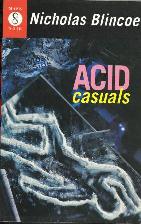
Acid Casuals was published in 1995, at a time when the drug, gang, gay and club scenes in Manchester were all making the headlines and only the red half of the city had something to sing about.
I believe the book has been out-of-print for some time, but it certainly caused quite a stir in its day and launched the crime-writing career of my fellow boulevardier Nick Blincoe. Indeed, my copy of Acid Casuals was inscribed “Read with pleasure – thumbs up!” by Nick during a break in the proceedings of the 1995 Boucheron in Nottingham. At this distance, I can remember little of that signing session but I suspect that drink had been taken.
Gossip from the Eastern Marshes
Here in the wilds of East Anglia the reed-beds and haywains are always alive with murmurings on the subject of crime fiction, whether it is Crime Writing Month or not.
Now a resident of Suffolk, Melvyn Barnes, O.B.E., had a distinguished career as a librarian in Kensington and Chelsea, Westminster and the City of London, but is perhaps best known among mystery fans for two consumer guides to crime fiction which rapidly became standard reference works: Best Detective Fiction (1975) and Murder in Print (1986).
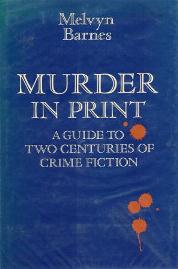
I knew that Melvyn had also produced a ‘bio-critical’ study of Dick Francis and his works, but now I hear he has embarked on a study of Francis Durbridge (1912-1998) and will be attempting to provide a comprehensive list of all Durbridge’s plays, radio plays, television dramas and novels. Best known for creating ‘Paul Temple’ (briefly revived on radio in 2006, though I suspect better remembered in Germany than here), Durbridge’s career was long and prolific, stretching from 1938 into the 1990s and so the task is a far from easy one. I wish Melvyn the best of luck.
One of the regular reader(s) of this column is Jeremy Cameron, who has forsaken the tranquil pastures and shaded glades of Walthamstow for a life in the harsh and unforgiving environment on the front line in West Norfolk, where I believe he has already been approached by the King’s Lynn ‘Massive’.

Back in 1995 Jeremy burst on the crime scene with the gritty urban thriller Vinnie Got Blown Away, which was funny, violent, written in the patoisof deprived London housing estates and with a wide boy criminal, Nicky Burkett as the hero. Sadly, there were only five ‘Nicky Burkett’ books, even though the second in the series, It was an Accident, was filmed in 2000.
However, Jeremy got in touch with me not to discuss old times, but because my preview last month of Elizabeth Wilson’s The Girl in Berlin prompted a personal memory of the spy scandals in the 1950s which are featured in the book.
As a youth, Jeremy had a schoolmaster called Neville who had been at Cambridge with the spy Guy Burgess. When Burgess defected to Russia in 1951 (along with Donald Maclean), MI5 agents paid a call on Mr Neville as they had found in Burgess’ papers, an invitation from him to a party in 1935.
"Did you invite him to a party, old boy?" they enquired.
"Well, yes, I did," Neville replied.
"Seen him since, have you?"
"Well, no, I haven't actually."
"Oh. Thanks, old boy. That's all we wanted to know."
They accepted Neville’s word, as a gentleman of course, that he was telling the truth.
This was exactly what had got them into all that trouble in the first place...
Are Brookmyre’s Titles Possibly Getting Shorter? Or is it just Me?
Christopher Brookmyre was once famed for being the Frankie Boyle of crime-writing and for having some of the longest titles in the book world, such as All Fun and Games Until Somebody Loses an Eye, A Tale Etched in Blood and Hard Black Pencil and the memorable Attack of the Unsinkable Rubber Ducks.
In recent years his titles seem to have got shorter, including the one-word Pandaemonium, as has his name; for ‘Christopher’ is now‘Chris’.
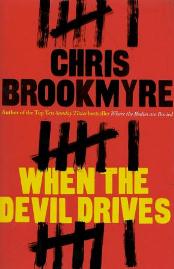
This month, Little Brown publish his latest When The Devil Drives in which Chris (if I may call him that) he gives a starring role to the ridiculously young Jasmine Sharp –Glasgow’s only (?) part-time actress, part-time private eye – who featured in his last book Where the Bodies Are Buried.
Canterbury Tales
I have not heard from my old friend Paul Doherty for some time. As the headmaster of a large comprehensive school, he no doubt has many other things on his mind and is probably relaxing by engaging in his favourite leisure activity of baiting Ofsted inspectors. I am delighted to report, however, that the prolific author of historical mysteries has not been idle and he has new book out this month and, I believe, another scheduled for the summer.
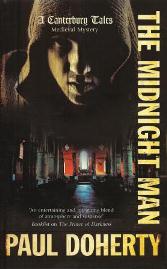
With The Midnight Man, published by Crème de la Crime, Doherty returns to his ‘Canterbury Tales’- a series he began in 1993 with An Ancient Evil and which, I think I am right in saying, he last visited ten years ago in 2002 with A Haunt of Murder.
The particular ‘tale’ in Midnight Man is told by the physician, one of a group of 14th century pilgrims heading for Canterbury who have left the famous Tabard Inn in Southwark and are now putting up for the night at another roadside boozer with the resplendent name of The Strong One of Jacob.
A certain Mr Geoffrey Chaucer is, of course, in attendance and the tale he hears from the physician pilgrim is one of supernatural goings-on, sorcery and exorcism. Though, as Paul Doherty points out in an Afterword, more women were burned or hanged for witchcraft in Essex between 1603 and 1663 than in the entire country in the medieval period.
Cynics would no doubt sneer that this only just goes to show that Essex Girls were a problem even then.
No Laughing Matter
When I heard that the theme for this year’s Crime and Mystery Convention at St Hilda’s College Oxford (an annual event which for legal reasons I have never attended) was to be comedy crime fiction, I automatically assumed that my old chum that cosmopolitan sophisticate Peter Guttridge would be chairing events.
Not only is Peter one of the hardest-working chairs of literary festivals on the literary festival circuit but also has, in the past, turned out a clutch of comic thrillers starring the animal-loving journalist Nick Madrid.
I have, as usual, jumped to the wrong end of the stick. It turns out that the erudite Andrew Taylor is chairing the collegiate conference of comedy and of course I should have remembered that Peter Guttridge went ‘straight’ (or should that be‘legit’?) some time ago and forsook the comedy coal face for the Elysian Fields of serious crime fiction.
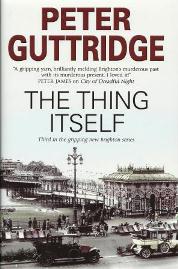
Proof of that, should anyone dare to doubt my word, comes in the fact that the third part of Peter’s highly-regarded Brighton triptych, The Thing Itself, is now out from Severn House and comes with forceful recommendations by Peter James (who knows a thing or two about thrillers set in Brighton) and Lee Child, who rarely lends his name to dust-jacket endorsements.
Mr Guttridge, although he resides for most of the year in London in his West End penthouse these days, has strong links to Brighton and indeed recently chaired what I am sure was a fascinating discussion at the Brighton Festival on a book rightly described as a seminal piece of ‘British noir’ and also, accurately, as a prime example of ‘British seedy’ fiction.

The author of Hangover Square, Patrick Hamilton (1904-1962) was born in Sussex and spent his early life in and around Brighton and Hove. Early fame came with his 1929 play Rope which was later filmed famously by Alfred Hitchcock, but his greatest contribution to British crime writing came, I feel, with his 1941 psychological thriller Hangover Square which is subtitled A Story of Darkest Earl’s Court. And whilst my copy is now well over 50 years old, I am delighted to say that the book is still in print and without doubt will be part of my Compleat Crimereader project which, once government funding and charitable status are confirmed, I will launch as a valuable resource for any intelligent reader wishing to construct a personal library of essential crime fiction titles.
The Far Side of the World
In my own small way – and with absolutely no thought of a potential O.B.E. as Her Majesty has quite enough on her plate this year – I try to do my bit for the Commonwealth whenever I can.
Only last week it was a delight to introduce the distinguished crime critic of the Canberra Times, Jeff Popple, to one of my favourite London eateries, Madame Ming’s, which is so conveniently placed between that most salubrious of watering holes The Coach and Horses and my club, Gerry’s.
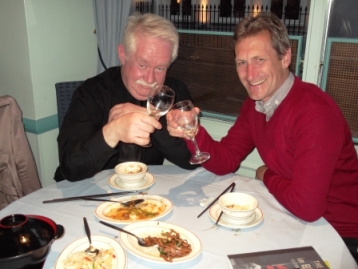
Jeff very kindly brought me the latest Big Thing Down Under in crime fiction, Promise, the debut thriller of television writer and producer Tony Cavanaugh, which is about to be published in Australia by Hachette. I know nothing of the book, but I do respect Jeff Popple’s judgement and he would not have presented it to me when a lesser gift – a bottle of duty-free brandy for example - would have seen honour and ritual observed. Therefore I will read Promise and report back and should it turn out to be an international bestseller, just remember where you heard of it first.
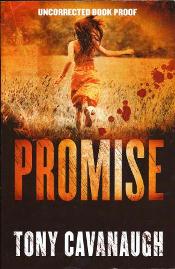
I have also recently learned that I have been, yet again, honoured by the crime-fiction loving community in New Zealand by being asked, for the third year running, to be a judge for their prestigious Ngaio Marsh Award.
The man behind the award and a one-man crusading army promoting New Zealand’s blossoming crime fiction scene is master blogger Craig Sisterson, who next month will be in London on a flying visit. I have already offered my services as a guide to the cultural and social hot spots of the capital; namely The Coach and Horses, Madame Ming’s and Gerry’s…..
Famous Belgians
If I were to say to you: ‘murder mystery and Belgian detective’, how many of you would come back with ‘Hercule Poirot’? Only a dedicated, but discerning, few would, I suspect, have answered ‘Chief Superintendent Fons Luyckx’ which may be a strange name to many but a very useful one at Scrabble.
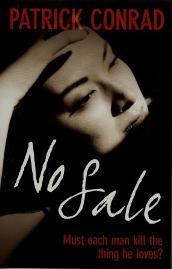
It is also the name of the Antwerp detective hero of No Sale, published by Bitter Lemon, and written by Patrick Conrad, the Belgian (Flemish) poet, painter and film-maker who actually writes in Dutch.
Anyone familiar with the comedy of Bill Bailey will have certain preconceptions about Belgian jazz fans. They are all confirmed in No Sale, although jazz references are outnumbered at least ten-to-one by references to films. This is a movie buff’s dream of a crime novel which starts when the estranged wife of a professor of film history is fished out of an Antwerp dock, very dead. It could almost be the opening to a classic film noir.
All in all it’s a surprisingly zippy read which moves at a fair clip, the pace maintained by cinematic scene shifts and splashes of black humour. Who was it said that crime fiction in translation was never fun?
That was probably me.
Lone Rangers
I have lost count of the number of covers featuring “Walking Away Man” or “Running Man” which have appeared so far this year. I already have a library of more examples, but lack the energy to share them. However, it is worth noting that publishers have recently come up with variations on the theme; notably “Walking Away Girl”, “Running Woman” and the ever-popular “Standing Still Lone Man in Silhouette”.
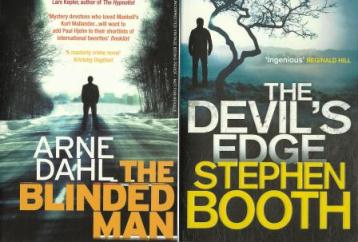
Holding the Front Page
If I may blow my own trumpet (a 1929 "B-flat" Boosey and Hawkes) for once, I can report that one of my early novels – in fact the earliest – has, in electronic form, made the front page of the prestigious Essex County Standard.

I was happy to allow my book to be used in a competition for a Kindle reader, even though I am not terribly sure what one is, and it is purely fortuitous that my front page splash coincided with those terrific Telos Publishing people producing attractive new editions of the award-winning Angels in Arms from 1991 and Family of Angels from 1996, which also includes the short story Smeltdown which inspired the novel and which is now back in print for the first time in twenty years.
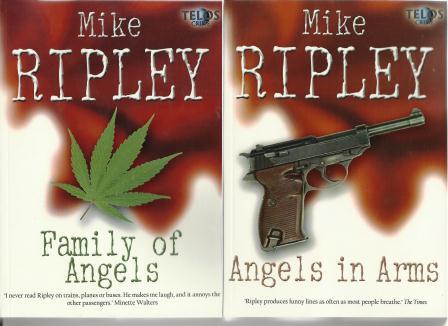
Whilst these are, of course, proper books, I am assured that they too are available as Kindle “downloads” –whatever that means.
Remembering Bron
It is more than eleven years since my old chum and fellow boulevardier Auberon ‘Bron’ Waugh the novelist and journalist died at the ridiculously young age of 61, but I often think fondly of his kindness, especially when he introduced me, one evening in The Academy Club, to the delights of Bergerac Blanc.
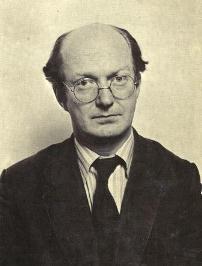
Recently I was reminded of the story Bron told of a visit to a literary event somewhere in Scandinavia in the 1970s when he was accosted by ‘a lugubrious Finn’ who opened the conversation with: “I haf your rotten book.”
Bron, always polite, said: “Oh I’m sorry, didn’t you like it?”
The Lugubrious Finn replied: “Yes, very much. Haf you rotten another?”
Pip! Pip!
The Ripster
|